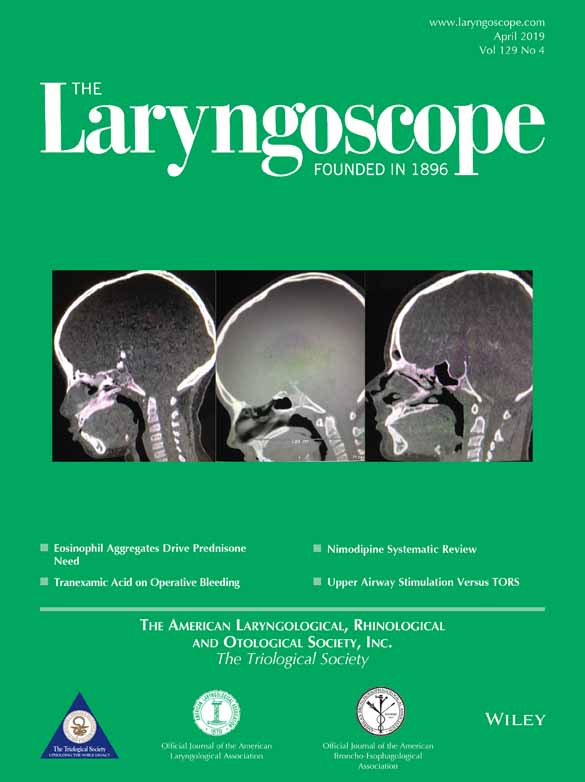Imaging predictors for malignant transformation of inverted papilloma
Presented as an oral presentation at the North American Skull Base Society Annual Meeting, San Diego, California, U.S.A., February 16, 2018.
The authors have no funding, financial relationships, or conflicts of interest to disclose.
Abstract
Objectives/Hypothesis
Inverted papillomas (IPs) are benign tumors of the sinonasal tract with a malignant transformation potential. Predicting the transformation propensity of IPs and corresponding risk factors has long been a challenge. In this study, we aimed to use radiographic findings on magnetic resonance imaging (MRI) and computed tomography (CT) to help differentiate IP from IP-transformed squamous cell carcinomas (IP-SCC).
Study Design
Retrospective cohort study.
Methods
A retrospective analysis was performed at two institutions comparing IP (n = 76) and IP-SCC (n = 66) tumors, evaluating preoperative radiographic imaging with corresponding surgical pathology reports. The presence of a convoluted cerebriform pattern (CCP) using postcontrast T1-weighted and T2-weighted MRI was evaluated. Using MRI diffusion-weighted imaging (DWI), we calculated the apparent diffusion coefficient (ADC) value of each tumor. We also determined the tumor origin, attachment sites, and presence of bony erosion using CT imaging.
Results
Benign IPs had a higher prevalence of CCP on MRI compared to IP-transformed SCC (P = .0001. The mean value ADC of malignant IP-SCC (ADCb0,1000 = 1.12 × 10−3 mm2/s) was significantly lower than that of benign IPs (ADCb0,1000 = 1.49 × 10−3 mm2/s, P = .002). IP-SCC tumors were more likely to be have orbital wall attachment (P = .002) and bony erosion (P < .0001) compared to IPs.
Conclusions
Evaluation of CCP and DWI with ADC values on MRI are promising qualitative and quantitative methods to help differentiate benign IP tumors from their transformed malignant counterparts. Malignant IP-SCCs are associated with a loss of CCP and lower ADC values. Findings of orbital wall involvement and bony erosion on CT may also help determine presence of malignancy.
Level of Evidence
4 Laryngoscope, 129:777–782, 2019




